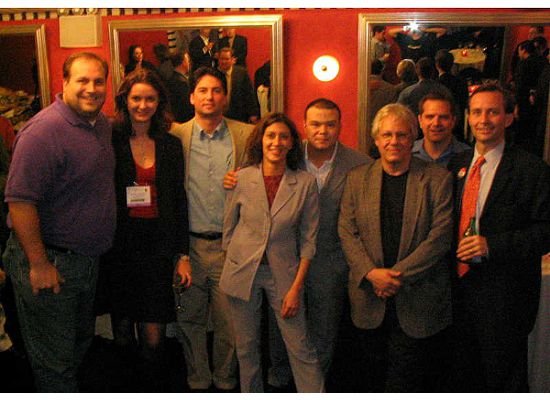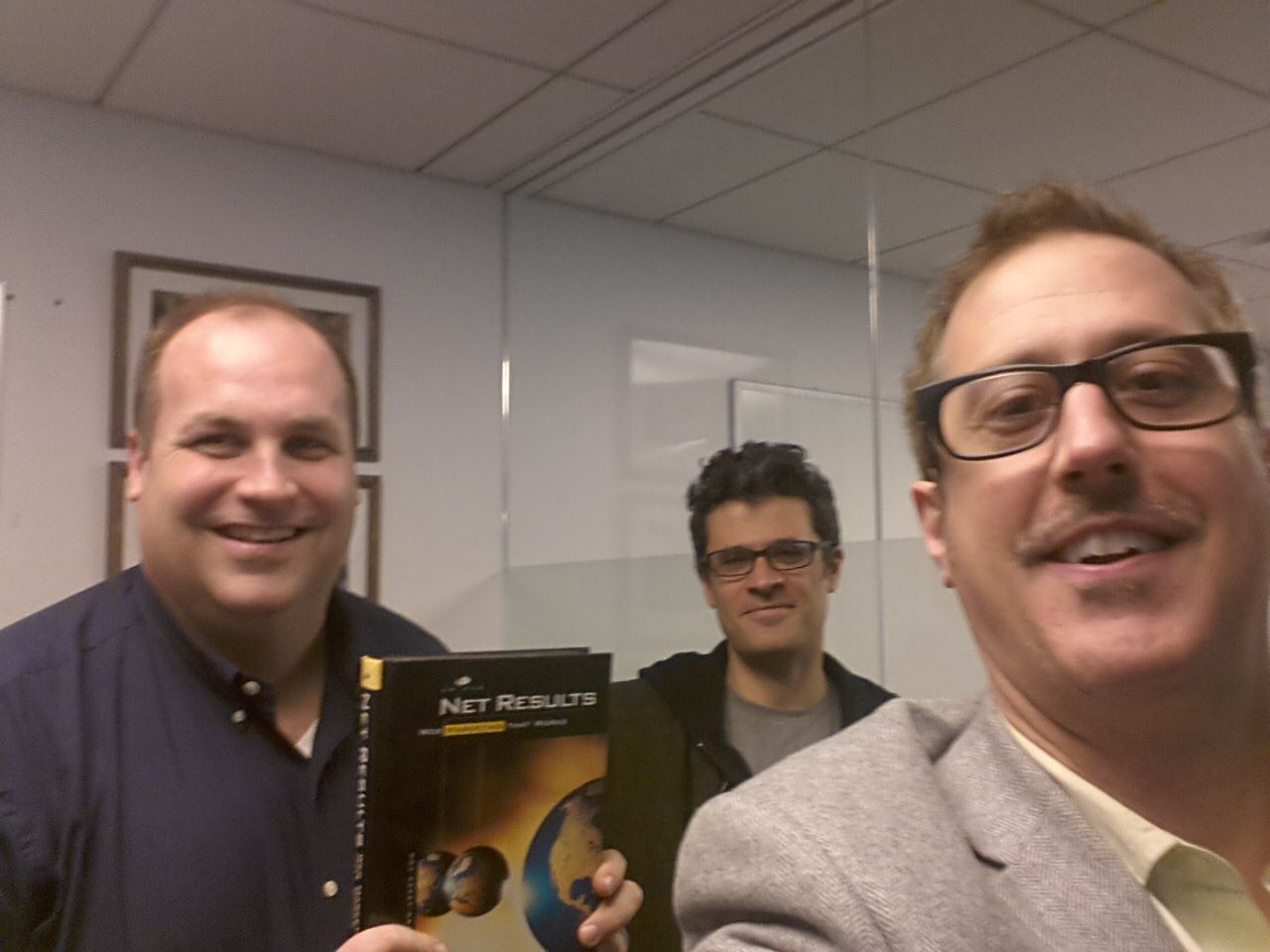Expectations of Relevance
/More channels of content in just about every medium equals increased consumer choice. And capitalists just adore choice, right? But who could have forseen the impact of content distribution, combined with the impact of the content aggregators who are pulling together content across multiple channels? People wonder what's wrong with the media business these days. In reality it's quite simple.
In my column for tomorrow's Online Spin on Mediapost, I discuss the impact of fragmentation. It's a subject I've dealt with several times. Since I have only so many column-inches I can take up with my Spin each week, doing a long-form commentary piece can be tough. But there are some important points I want to expand upon here.
Let's take a look at some trends that have emerged over the past 5-10 years in media:
- With the proliferation of cable, satellite and digital cable, many U.S. households have access to a wider range of channels. In the past five years, I've personally gone from 85 channels or so to over 600. What's happening to broadcast television now is what happened to magazines years ago. Decreased cost of distribution leads to a proliferation of channels, which leads to many smaller niches of content types. For example, something like the Sci-Fi channel couldn't have existed 25 years ago, but it can exist now.
- As niche channels flourish, consumer expectation of relevance is increased. If I can get a dozen Star Trek reruns a week on cable, I come to expect that cable delivers content that's more relevant to me. This is one of the main drivers behind the popularity of cable and satellite. It's also the reason why consumers today are less likely to sit through programs of marginal interest. It used to be that network executives could stick a struggling program in a time slot between two popular shows and expect a ratings boost for the struggling program. That strategy has been less successful in this day and age. Increased expectation of relevance is also contributing to the popularity of VOD (Video on Demand).
- While many consumers embrace the increased number of choices, many are also put off by it. Remember the Bruce Springsteen tune called "57 Channels and Nothin' On?" Media consumers have to utilize more channels and have increased knowledge of how to navigate those channels in order to deliver the content they want when they want it.
- In direct opposition to this "channel overload" there are several content aggregation devices that are simplifying things for consumers. The most obvious one is Tivo. Not only does it find programming for consumers based on interest, but it also allows for time-shifting, so that content can be consumed when it's convenient for the consumer. A less obvious aggregator is something like Claria or WhenU, which aggregates advertising based on web-wide surfing habits and delivers it based on observed behavior. Privacy-conscious folks tend to criticize these apps for observing surfing behavior, but in reality, there's a reason why ads delivered this way experience interaction rates orders of magnitude higher than their other web brethren - they deliver on the expectation of relevance. Topical blogs are also delivering aggregation of sorts, as human experts on a given subject are pulling together content from all over the Internet that is relevant to a given subject.
- "Narrowcasting" is occurring across all media. Satellite and Internet radio are transforming radio. Cable and satellite are transforming television. Magazines continue to explore new niches. It's happening everywhere.
With this transformation comes several big problems. Two problems emerge from the decrease in typical audience size from programming element to programming element. One is that advertisers are used to reaching huge numbers of people in a demographic with the broadcast model. The other is that broadcasters have expectations of deriving tons of revenue from that reach to large-scale audiences.
One can see this problem in action in the realm of news broadcasting. Increased competition from emerging channels has forced news outlets to do whatever they can to retain the audience they have. These days, the emphasis for large news organizations seems to be on getting the story first rather than on getting the story right. We saw this in the 2000 general election results and in countless other impactful news stories. Those who get there first get both the glory and the ratings, thus helping to retain audience. Increased competition means less time for fact checking and more pressure to get out there with something rather than the right something.
You can see this effect across the board in the advertising business and how it deals with broadcast media. Over the past several years, ratings have been on the decline. Advertisers are paying more money to reach fewer people. Many advertisers are falling short of yearly communications goals they set for themselves. They reach fewer people, but they reach those people more often. We see higher message frequency with decreased reach. Sales tend to decline because those who are being reached by the message are often being clobbered over the head with it many, many times.
It's becoming clear that advertising is not changing quickly enough to follow the times. We address increased expectation of relevance with the same old same old. Instead of diversifying our advertising spend, placing it across more channels, we continue to have the same expectation of the Big Three networks. Instead of learning more about our target audiences, we rely on the same old generalizations about advertising audiences, based on broad demographics like Men 18-34 or Adults 18+.
What's on the horizon? All signs seem to point toward the death of the broadcast model. Actually, I won't go that far. There's always information and entertainment that will appeal to broad audiences. Most of us in the U.S. want to know what's going on in Iraq. And there are still many popular and entertaining TV shows that appeal to large-scale audiences. Broadcast will always be the most efficient way to deliver that sort of content (women of all ages are still gathering around the water cooler the day after a new episode of Sex and the City runs). Similarly, there will always be products that most people can use that will be interested in underwriting broad-based content. Anyone can use Tylenol when they have a headache - and most people get headaches. Anyone can buy a Coca-Cola when they get thirsty, etc.
But perhaps what we're on the verge of is a decreased importance of the broadcast model (as we've come to know it) in the grand scheme of things. Broad-based channels are losing their appeal to many content consumers over time. To fail to see this is to ignore the obvious.
But what do advertisers do when the broadcast model fails to deliver? I'd argue that they first need to learn more about their target audiences. What interests, conditions and behaviors are strongly correlated with a need for the advertiser's product? This will be valuable information in the years ahead. Buying media against Adults 18+ won't cut the mustard for much longer.
Secondly, I think advertisers will need better research against individual media vehicles. After they cover the aggregators who are pulling together content that has niche appeal to their targets, they'll have to look into the niche vehicles themselves. As we all know in the media business, the smaller the vehicle, the less information we typically can get about it. This needs to change.
Of course, the de-emphasis of broadcast channels isn't going to happen overnight. (Catastrophic "paradigm shifts" are sooooo 1994.) The media business is filled with old school holdouts who made their money off the broadcast model. As my old partner Tim McHale used to say, this will happen "retirement party by retirement party." As people who are fluent in the lexicon and methodology of new media achieve increased importance in their respective organizations, we'll see shifts of advertising dollars to niche channels.












































